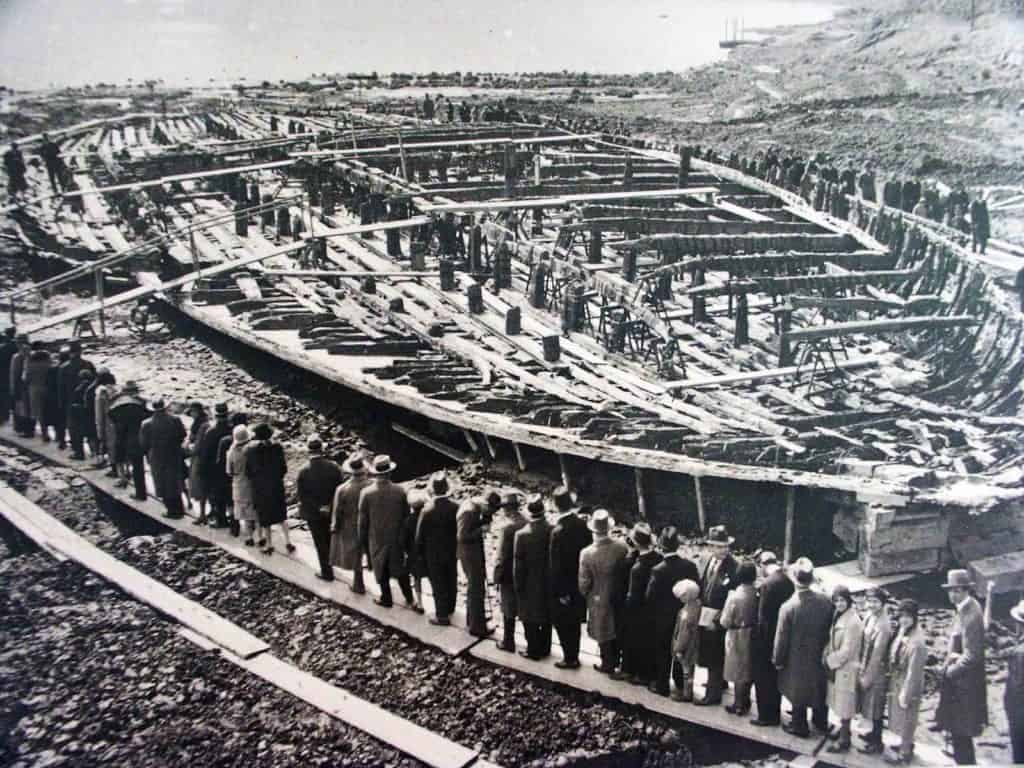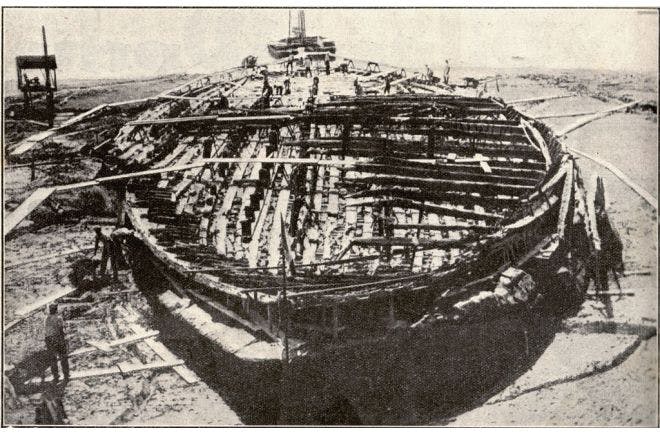The fascinating history of Rome is filled with intriguing tales and mysteries, but few are as captivating as the story of Caligula’s pleasure barge. Uncovered by none other than Italian dictator Benito Mussolini, this tale combines ancient Roman debauchery, a stunning lake, and the iron-fisted rule of a 20th-century fascist leader. Join us on this adventurous journey as we explore the luxurious world of Caligula’s pleasure barge and the lengths Mussolini went to uncover it.

Caligula’s Lavish Shipbuilding
Caligula, the infamous Roman emperor, was known for his scandalous lifestyle, extravagant tastes, and penchant for violence. However, a lesser-known aspect of his life was his love for shipbuilding. His second-century biographer, Suetonius, wrote about Caligula’s magnificent galleys, built along the stunning southern Italian coastline of Campania. These Liburnian galleys were lavishly adorned with jewels, multicolored sails, and opulent interiors fit for an emperor. Caligula would spend his days cruising along the shores of Campania, accompanied by choirs and orchestras.
The Sunken Treasures of Lake Nemi
While these ships mentioned by Suetonius have yet to be discovered, we do know about Caligula’s enormous pleasure barges, also known as the Nemi Ships. They were built on the picturesque Lake Nemi, a volcanic crater lake located 19 miles south of Rome. For centuries, locals knew about the existence of two of these colossal floating palaces, which lay sunken at the bottom of the lake’s western side.

Mussolini’s Quest to Uncover the Nemi Ships
Attempts to salvage the Nemi Ships spanned centuries. However, it wasn’t until Mussolini’s fascist government in the 1920s that the breakthrough came. An ardent supporter of all things Roman, Mussolini saw the potential prestige in uncovering these ancient treasures. In a 1927 speech, he announced plans to drain the lake and recover the ships. By 1931, both ships were brought to the surface, their wood treated, and artifacts taken. They were then housed in the purpose-built Museo delle Navi Romane (Museum of the Roman Ships), on the shore of the lake.
The Tragic Fate of the Recovered Ships
The Nemi Ships survived underwater for over 2,000 years. Sadly, the ships were later destroyed within a decade of their life on the surface. In 1944, retreating Nazi soldiers set the ships alight, reducing them to cinders. But the story doesn’t end there. Rumors of a third, even larger ship persisted, and Italian authorities have been working together to search for it. Using high-tech scanners, they’ve identified an area 100 feet deep for divers to explore.

The Enchanting History of Lake Nemi
While the hunt for the third ship continues, Lake Nemi remains a place of enchanting beauty and historical significance. The lake’s name, Nemi, comes from the Latin word nemus, meaning “holy wood.” It was famous in antiquity as the home of the Rex nemorensis, or the “King of the grove.” The King was a runaway slave who served as a priest to the goddess Diana. He faced the constant threat of being violently replaced by someone stronger in a ritualistic mortal combat.
Caligula’s Connection to Nemi
Caligula’s connection to the Nemi area goes beyond his pleasure barges. Suetonius wrote that the emperor, jealous of the king’s position, decided to replace him. Caligula found the strongest slave he could. He then sent him to Nemi to fight the incumbent king, who ultimately met his demise.

(Credit: Archivio fotografico storico del Museo della scienza e della tecnologia L. da Vinci/Wikimedia Commons)
The tale of Caligula’s pleasure barge, uncovered by Mussolini, is an incredible story that intertwines ancient Roman history with the pursuits of a 20th-century dictator.
The Enduring Allure of Ancient History
The story of Caligula’s pleasure barge and the quest to uncover these ancient vessels transcended time and political ideologies. Mussolini’s motives were driven by a desire to glorify his fascist regime through the discovery of these Roman relics. The tale still captivates historians, archaeologists, and adventure-seekers alike.
Even today, the search for the elusive third ship remains an exciting endeavor. With advances in technology, there is a renewed hope that this ancient treasure may yet be found. The hope is to further unveiling the secrets of Caligula’s luxurious and debauched world. The discovery of this third vessel would not only add to our understanding of the emperor’s life but also serve as a testament to the enduring allure of ancient history.

The Complex Relationship Between History and Politics
The story of Caligula’s pleasure barge and its connection to Mussolini serves as a reminder of the complex relationship between history, politics, and power. The fascist leader had an obsession with the Roman Empire. His desire to link his regime to its glory days speaks to the timeless appeal of the ancient world and its influence on modern rulers. In this sense, the recovery of the Nemi Ships is not just a story of archaeological triumph, but also a reflection of the way history can be wielded for political purposes.
Lake Nemi, with its stunning beauty and rich history, continues to draw visitors from around the world. They come to witness firsthand the place where Caligula’s pleasure barges once floated. They also come to see where the legend of the Rex nemorensis still echoes through the hills. As the quest for the third ship progresses, the lake remains a symbol of the enthralling and enigmatic nature of ancient Rome.


 Additional Fun Facts
Additional Fun Facts

